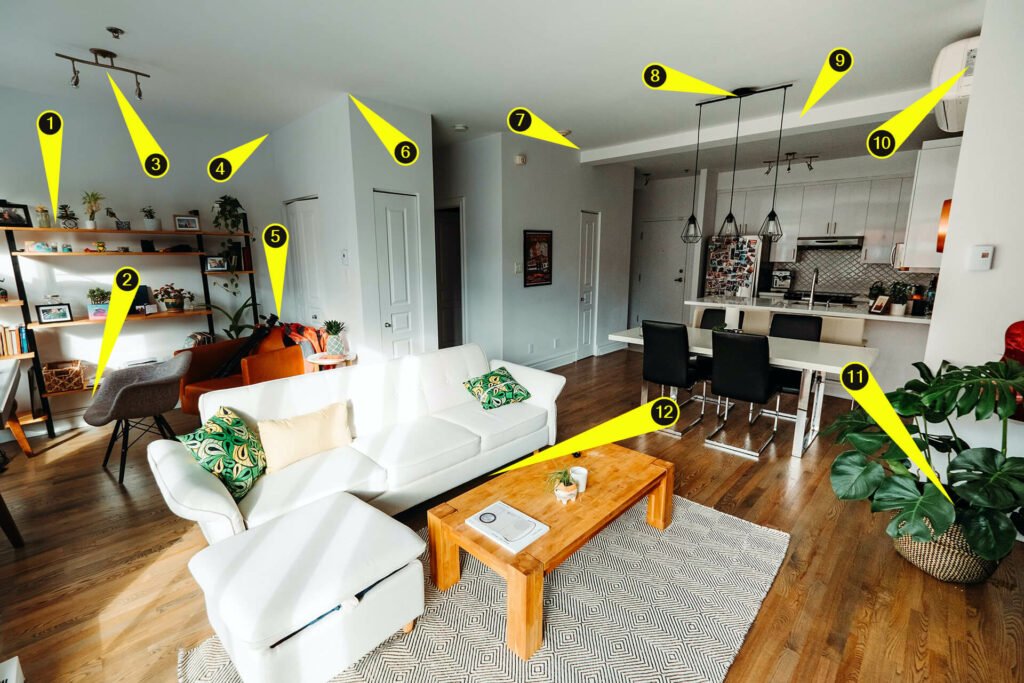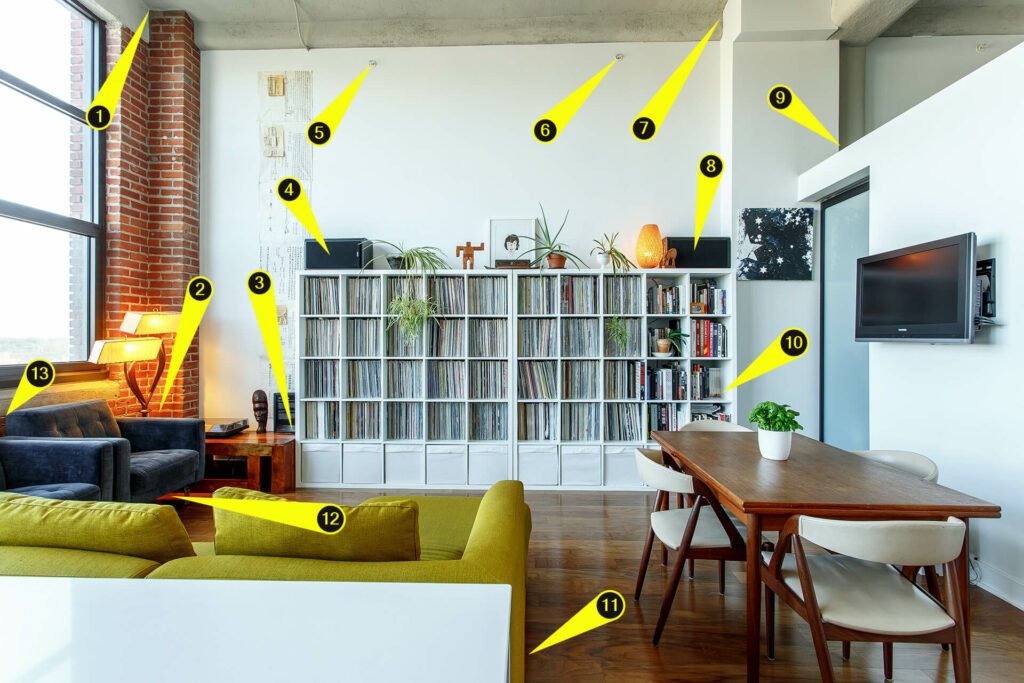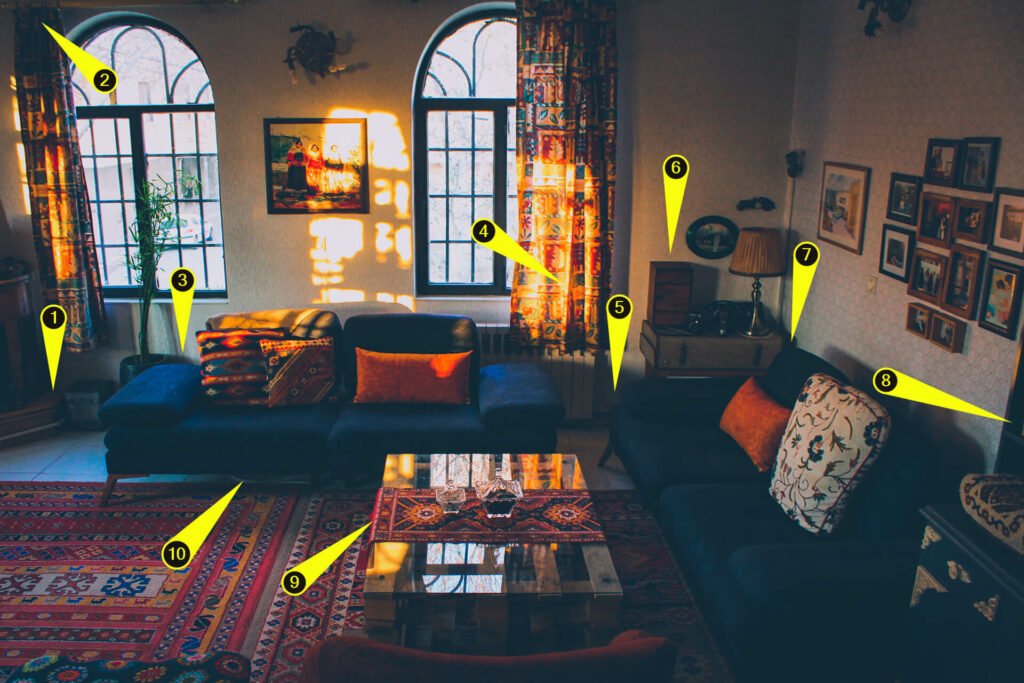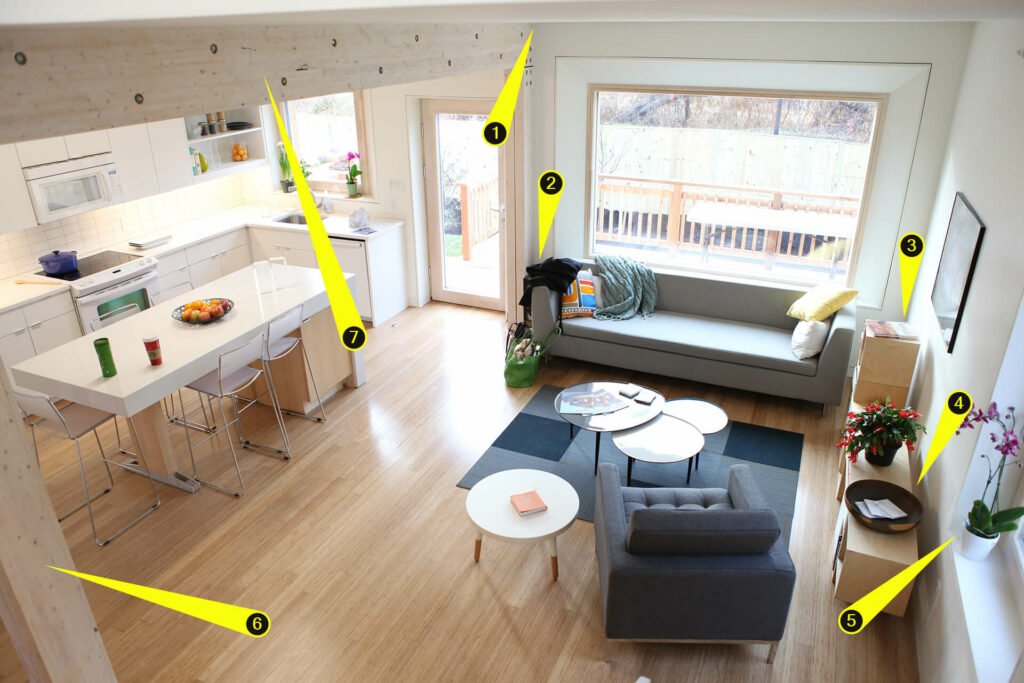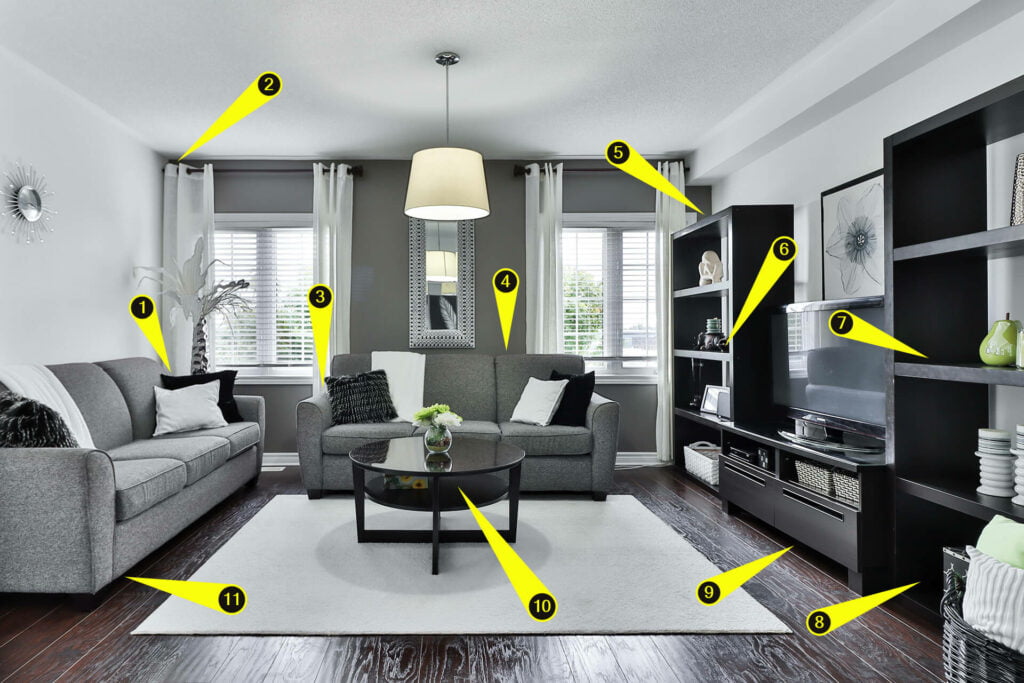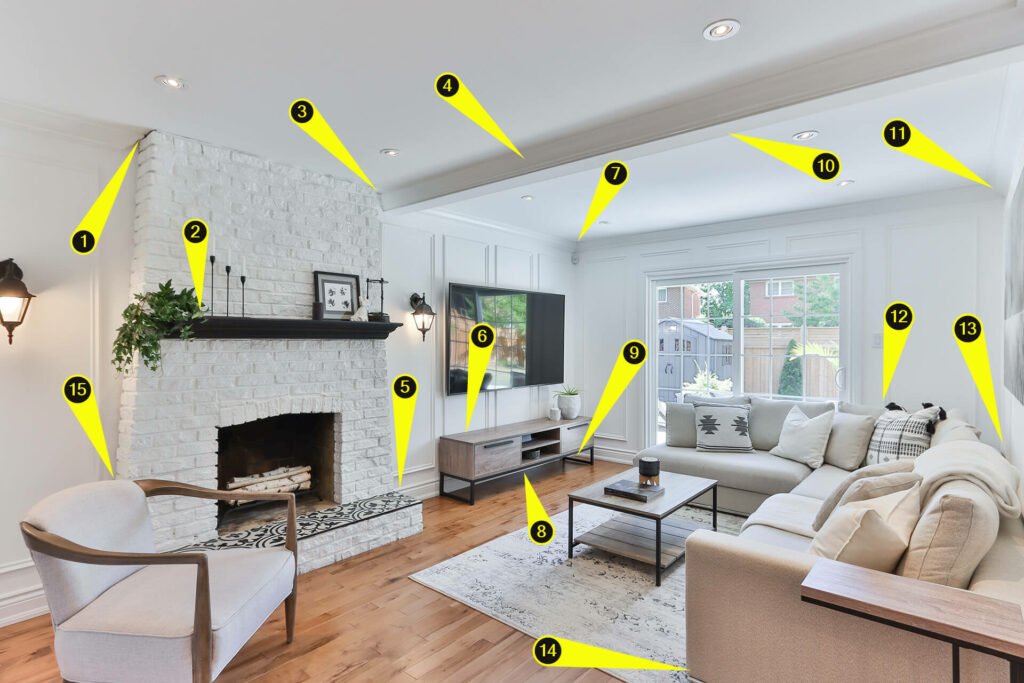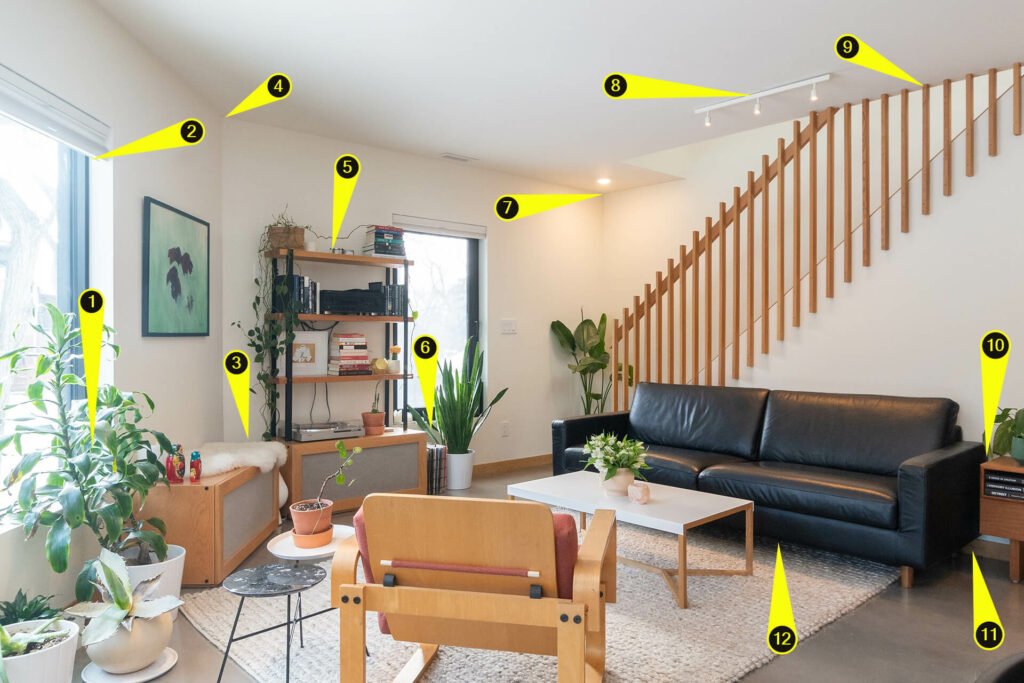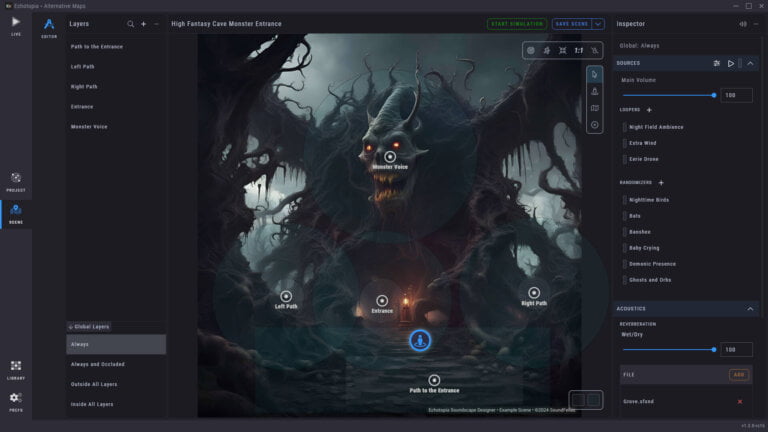Everyone has some sort of sound system or two in their place, frequently in the living room or bedroom, all of which can double as game rooms. And it’s usually a simple stereophonic system on a desk or table.
By combining a little DIY audio engineering and your love for good old RPG fun, you can give your sessions that extra oomph.
Warning
If you are setting up electronic equipment by yourself you should take all proper measures to protect yourself, other people, and your equipment. In powerful amplifiers and big speakers, the electric power of the audio signal is strong enough to seriously damage equipment or your hearing. Even systems with lower audio power can still damage your equipment or even your hearing. This article is not a technical guide and its only purpose is to show you the potential of the configuration your game room could achieve. We strongly recommend that you consult a professional expert in any case.
More is... more
Jumping from two speakers to a bunch is not really rocket science and comes with a couple of nice perks:
- Using multiple speakers will drastically increase your coverage, and more coverage translates to a better listening experience for you and your players.
- You won’t need to turn the volume up as much. That’s because the additional speakers will be closer to everyone, and the distance of the sound source to the listener is critical in how loud that is perceived.
Success
By cloning the channels of your stereo system, using more speakers around your game room, you will be able to distribute sound evenly around the room, offer a more immersive experience to your players, and achieve all that with lower volume.
The benefits for anyone involved can be easily listed:
Players
Everybody will be able to hear the sound much more consistently in the room, regardless of position or face.
People will discuss easier as the sound from the speakers will not mask their voices. As a bonus, their voice levels can remain at comfortable levels without losing the soundscape in the noise of loud discussion.
You
You will achieve more coverage without bothering the neighbors or someone in a room next door.
When the game ends, you can still take advantage of this setup. Use it to set a mood while relaxing, doing your yoga, meditation, or focusing on your work.
Dungeon master
The dungeon master will be grateful as narration will be heard cleaner, and it will be possible to change from low whispers to loud vocalizations together with the dynamic needs of the story.
How to do it
In a classic stereo setup, you have two discrete channels. Each one is carrying a different signal that combined gives us the perception of a sound field spanning the space between the two speakers.
But this setup can only give that perception for one listener that stands in a specific space which is called the sweet spot. When the listener moves away from this spot, or if other listeners are in other places in the room, like in the case of a tabletop session, there is no sweet spot. Actually, the issue is that, with classic stereophonic speaker placement and many people in a room, most of the people only hear some of the sounds, basically those closer to the speaker near them.
Now, if you try to move the speakers away from each other, you can get some extra coverage in the room, but you actually create what in audio engineering is called "hole in the middle", which has similar issues as well.
For soundscapes and music, when it comes to the enjoyment from a bigger than two or three people audience, like in a game room, cloning the stereo channels to more speakers and placing those speakers around the area is actually a viable solution, with more benefits than drawbacks.
Info
What we propose here might sound new and not tested in a domestic environment, but it's a common practice in a dance club, where they need the same benefits as in a tabletop RPG session. In dance clubs, they actually go further by summing the two stereo signals in one, and distributing this to all the speakers, so everybody everywhere inside the club can hear the same material verbatim.
In dance clubs, they have professional signal summing mixers, line repeaters, active signal splitters, and industrial-strength distribution processors.
Have no fear, you can achieve greatness in your home with very little cost.
Cloning one audio channel to more than one speaker is something that can be done easily using the various techniques, here are the three more commons nowadays:
Daisy chain
Did you know you can connect multiple speakers to a single output of an amplifier? Yep. E.g. three speakers on the amp’s right channel and another three on the left.
Daisy chaining is actually the most common way to do it, and you can actually find this option if you go shopping for an amplifier and speaker that are not a set. You can ask the sales representative, to propose a system with multiple speakers per audio channel output.
Warning
Daisy-chaining requires calculating the power output and impedance the amplifier can handle, so you don't damage your speakers or the output of your amplifier. However, a good audio store clerk should be able to calculate everything for you, and there are tons of guides online.
Star network
Star network is not as common, but it's great with uneven speaker placements, not-so-square rooms, and if you got different speakers that you want to try connecting.
When it comes to star networks, you actually have two options:
Cable splitters
You can do a star network the cheapest way using audio cable splitters.
Just search online and you can find countless. Here is an example search on Amazon.
Cable splitters usually come in the form of Y cables, which split the signal from your source in two, or multi splitters. This is actually the simplest solution whether it’s streaming audio from your computer or a mobile device.
Warning
Cable splitters are usually passive, meaning they don't amplify the signal to compensate for the extra power needed to drive more speakers than one. So one thing to keep in mind when using splitters, is that they reduce signal volume, the more devices you connect, the greater the reduction.
Switch distribution boxes
You can also use switch distribution boxes like this one I found with a random search on Amazon. I'm not actually suggesting this one, I just did a random search to show you an example.
You might need to research more to find the proper distribution box for your system, and it might seem like a complicated solution, but it's not so expensive and it's the proper way to do it. Depending on the capabilities of the distribution box you select, you gain extra control over your signal.
Success
More control over the distribution of your audio around the game room can be useful. For example, you can set the volume higher for any speakers located further from the table to balance them with the speakers located near the table.
Info
If your speakers don't have a volume control on them, you can have a separate volume control for each audio line (cable) by using audio extension cables with volume control. A search online for "audio extension cable with volume control" will return many useful results. This is not the best method quality-wise, but for gaming is more than enough. Try to find a product with good reviews, and look especially for "low noise".
Bluetooth daisy chain
Bluetooth daisy chain requires gear that supports Bluetooth 5. This method comes with quite a decent range (up to 30 meters or more), and devices that boast the capability to connect literally dozens of speakers together.
Before you cry out "That's the solution!", hold your horses, you technology geek! To transmit audio through BT (Bluetooth), the signal first has to be encoded with lossy compression, which lowers the quality. Now, we are not quality freaks, we only mention this because in this case, the quality loss is significant. Bluetooth might be ok though, and you can always use your smartphone with DMDJ in any store you go to test the audio output quality of that BT speaker. As with any critical listening test, we suggest you use one of your favorite DMDJ presets, so you are already familiar with the content that plays and able to judge the BT speaker easier.
Warning
Wireless connections are more prone to connectivity issues. Obstacles with thickness in the signal path, like walls and people, as well as traffic in the same channel from other devices can lead to dropouts.
Our own DMDJ mobile soundscape generator app is right at home when it comes to wireless distribution of your dynamic soundscapes from the palm of your hand. Of course, it excels in cable connections, and its intuitive interface allows you to control everything with one finger. Add layers of ambiance, sound effects, and music, and mix then dynamically using intensity levels, day/night selectors, and weather effects. It's one of a kind as it's the only soundboard for mobile that also features various dice systems, like custom dice formulas and a completely custom die maker with the capability to weigh each side of your die differently and add sound effects to play depending on the throw result. Learn more about DMDJ here.
Out of the ordinary speaker placement
Since you’re putting in the effort, you could try something a little more novel and add even more flavor to your multi-speaker layout.
- Place speakers on the ceiling. That will shower you with a curtain of sound. Imagine the forest breeze, the wind through leaves, rain, and thunder from your soundscapes pouring down on you from above. Neat eh?
- Place speakers on the floor. That will create a fountain of sound for you and your audience. Roaring flames, rivers, earthquakes, rough seas will be rising to envelop you!
- Conceal speakers behind curtains, underneath furniture, or inside bookshelves. Keeping the source of sound out of sight helps with keeping the audience immersed and in character. Think of it as watching a movie. Being able to see the set, filming gear, and crew kind of takes you out of the experience, doesn’t it?
Also, those are some of the speaker types that can be a perfect fit for more experimental speaker placement:
- Ceiling speakers. They come both in wired and wireless versions. Although they are meant to be installed inside walls, it’s fine to build (or find) a simple housing for them and either hang them or place them on the floor.
- Flat speakers. Also known as flat-panel speakers or installation speakers. They are bigger than ceiling speakers, but their flat profile makes them great for placing on the floor or hiding behind objects like mirrors and paintings.
Cable management
All those speakers and utility boxes will create chaos in any living room, and you don't want that. After all, as I mentioned earlier in this article, keeping any equipment concealed helps with the immersion. On top of that, keeping your cables tidy will give them a longer life and make it easy for you to clean the room.
Here are some common practices to help you with cable maintenance and management.
- For a more permanent installation, use cable channels, tracks, or trays. You can install them on the floor, mount them on walls and ceilings, or pass them underneath furniture.
- For more flexible installations, use cable tubes, there are plastic, neoprene, fabric, and even exotic materials. Some come with zippers, and all are easy to perforate if you need some of the cables to exit the tube before the end of the line.
- Use colored straps so you can organize the cables in color-coded groups.
- Use numbered cable rings, put on the start, end, and on strategic points throughout the length of the cable. Use that together with a list or a spreadsheet, to keep a reference of each cable's number.
Visual examples
To help you start thinking about positioning speakers around your game room, I gathered some common living room configurations and marked some of the best places for speakers.
Sounding off
And there you have it. A simple rundown of why more speakers can mean more for your RPG tabletop sessions.
With a little research and elbow grease, and a few creative ideas on implementation thrown in the mix, you can create an unforgettable experience for your tabletop RPG sessions, amaze your adventurers, and also have a pretty neat audio setup to use on any other occasion you might want to immerse yourself in sound.
If you have even fancier ideas, or you already tried something and want to share your experience, leave a comment below or drop in on our Discord. We’d love to hear from you!
